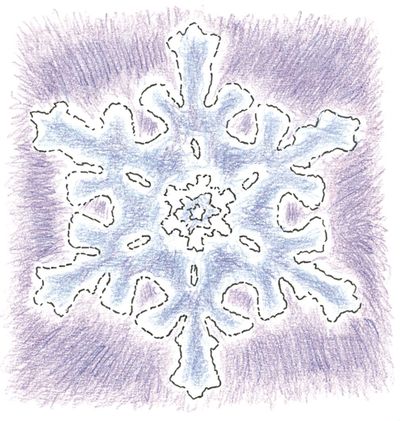Water Cooler: The science of winter (for kids)

The dropping temperatures, different types of precipitation, shorter days, strong winds, frozen, sparkly ground and icicles are all part of the winter season. But what causes winter to happen? The answer is found in outer space.
The reason we have seasons at all is because the Earth’s axis is titled. This means instead of standing straight up and down in relation to the plane of its orbit, the Earth leans a little bit. Most scientists agree that this was likely caused by about 10 giant collisions between the Earth and matter floating in space. The debris that broke off from the Earth during these collisions later formed the moon.
The tilted Earth travels around the sun. The path the Earth takes around the sun is called an orbit. One orbit roughly equates to 365 days, or one year. During this journey, the Earth’s exposure to the sun changes due to its tilt. The tilt stays the same year round, so it is the position of the Earth during its orbit that determines how sunlight hits its surface. During some parts of the year (or orbit) the north half of the Earth, called the Northern Hemisphere, points toward the sun.
During other parts of the year, the southern half, or Southern Hemisphere, points toward the sun. The Inland Northwest is in the Northern Hemisphere, which means we experience summer while the Northern Hemisphere is tilted toward the sun. When it is tilted away, we experience winter. This also means that people in the Southern Hemisphere, like Australians, experience winter while we in the Northern Hemisphere experience summer. The in-between stages of the tilt being toward or away from the sun is when we experience fall and spring.
The Earth’s tilt is also the reason for the shorter days in winter and longer days in summer. When the Northern Hemisphere is tilted toward the sun, sunlight hits it at a steep angle with concentrated light for a longer duration of time. During winter, when the Northern Hemisphere is tilted away from the sun, the light hits it at a shallow angle with the rays of light more spread out for a shorter period of time. These changes cause dramatically different temperatures and length of sunlight.
Temperatures fall as the Northern Hemisphere tilts away from the sun, and if it gets cold enough, the precipitation turns from rain to snow. What we often call snowflakes are actually snow crystals. The flakes of snow we see falling from the sky are snow crystals clumped together.
Snow crystals begin in a cloud as water vapor. The water vapor freezes around a piece of dust or pollen, and this little frozen clump is called a seed crystal. As the seed crystal travels around the cloud, it bumps into other water particles. Those particles start to stick to the seed crystal and eventually form a complete snow crystal. The most basic snow crystal is in the shape of a hexagon, due to the v-shape molecular structure of water. If there is enough water vapor in the cloud, more water molecules will attach to the snow crystal and form the arms that make a classic snow crystal shape.
All snowflakes have six sides, but depending on their journey from the sky to the surface of the Earth, they can look completely unique. The classic snowflake shape, with intricate arms, is called a dendrite snowflake. Dendrite means tree-like. These types of snow crystals often form in colder temperatures. Snowflakes made in a warmer environment with less water tend to be smaller and simpler, forming more basic snow crystal shapes like “plates” or “needles.”
Whether you love or hate winter, it makes for some fascinating science.